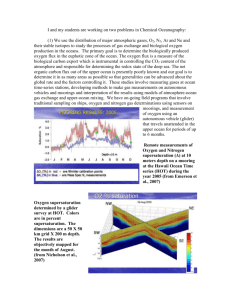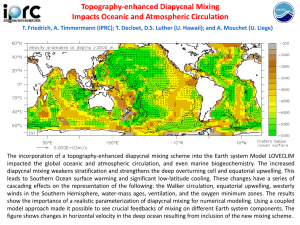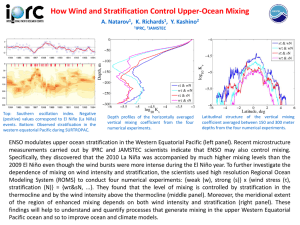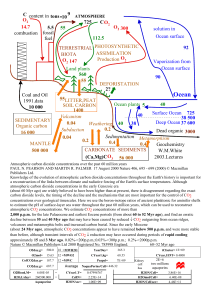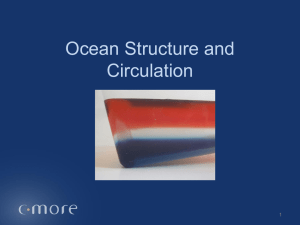RATES OF OCEAN MIXING and DEEP WATER VENTILATION
advertisement
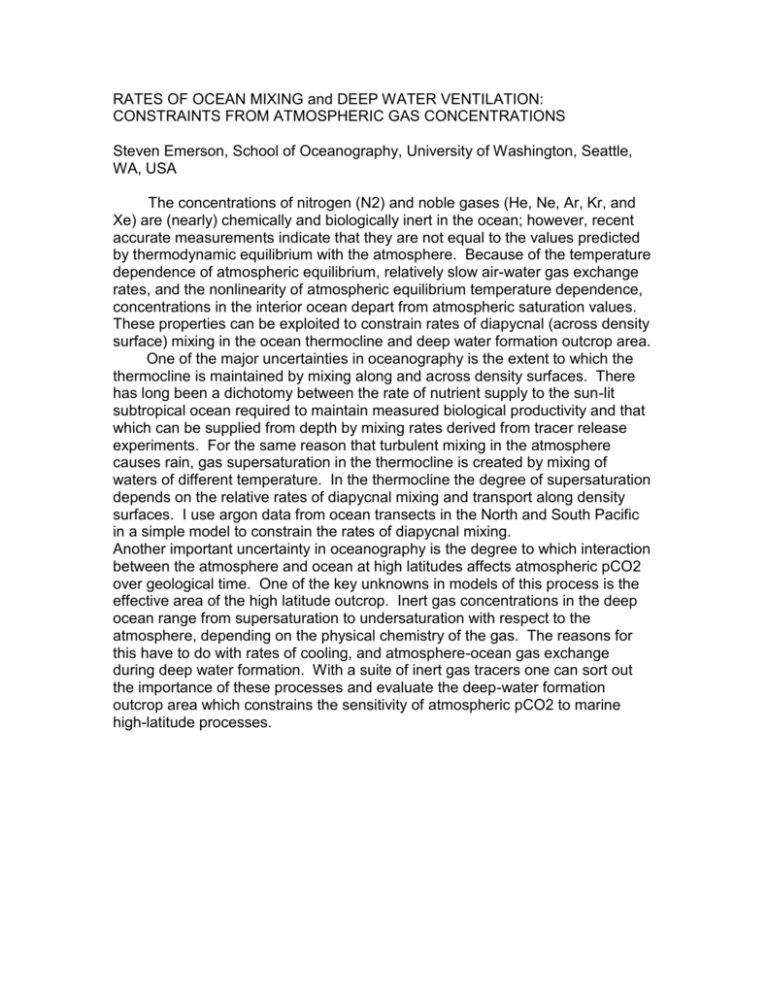
RATES OF OCEAN MIXING and DEEP WATER VENTILATION: CONSTRAINTS FROM ATMOSPHERIC GAS CONCENTRATIONS Steven Emerson, School of Oceanography, University of Washington, Seattle, WA, USA The concentrations of nitrogen (N2) and noble gases (He, Ne, Ar, Kr, and Xe) are (nearly) chemically and biologically inert in the ocean; however, recent accurate measurements indicate that they are not equal to the values predicted by thermodynamic equilibrium with the atmosphere. Because of the temperature dependence of atmospheric equilibrium, relatively slow air-water gas exchange rates, and the nonlinearity of atmospheric equilibrium temperature dependence, concentrations in the interior ocean depart from atmospheric saturation values. These properties can be exploited to constrain rates of diapycnal (across density surface) mixing in the ocean thermocline and deep water formation outcrop area. One of the major uncertainties in oceanography is the extent to which the thermocline is maintained by mixing along and across density surfaces. There has long been a dichotomy between the rate of nutrient supply to the sun-lit subtropical ocean required to maintain measured biological productivity and that which can be supplied from depth by mixing rates derived from tracer release experiments. For the same reason that turbulent mixing in the atmosphere causes rain, gas supersaturation in the thermocline is created by mixing of waters of different temperature. In the thermocline the degree of supersaturation depends on the relative rates of diapycnal mixing and transport along density surfaces. I use argon data from ocean transects in the North and South Pacific in a simple model to constrain the rates of diapycnal mixing. Another important uncertainty in oceanography is the degree to which interaction between the atmosphere and ocean at high latitudes affects atmospheric pCO2 over geological time. One of the key unknowns in models of this process is the effective area of the high latitude outcrop. Inert gas concentrations in the deep ocean range from supersaturation to undersaturation with respect to the atmosphere, depending on the physical chemistry of the gas. The reasons for this have to do with rates of cooling, and atmosphere-ocean gas exchange during deep water formation. With a suite of inert gas tracers one can sort out the importance of these processes and evaluate the deep-water formation outcrop area which constrains the sensitivity of atmospheric pCO2 to marine high-latitude processes.
